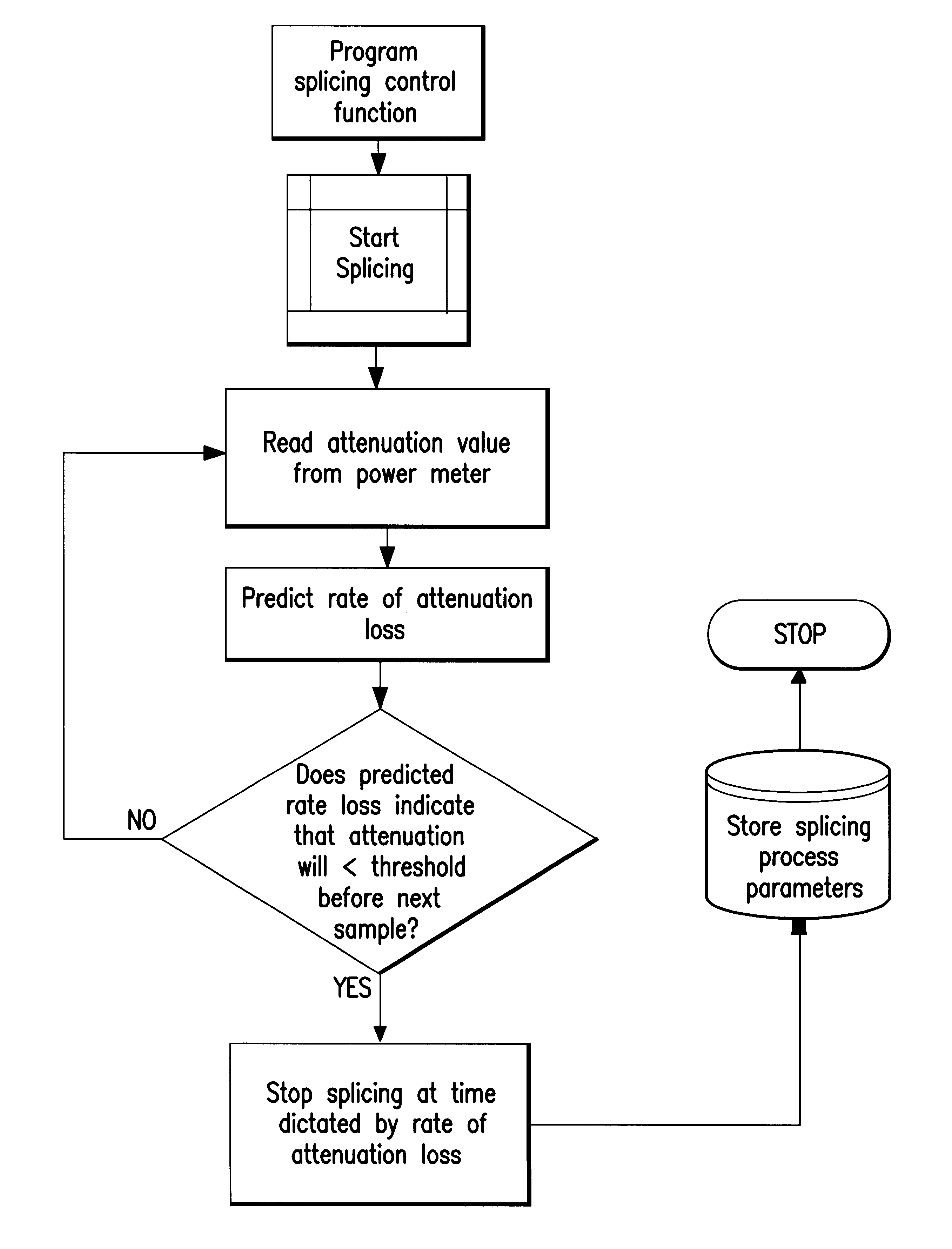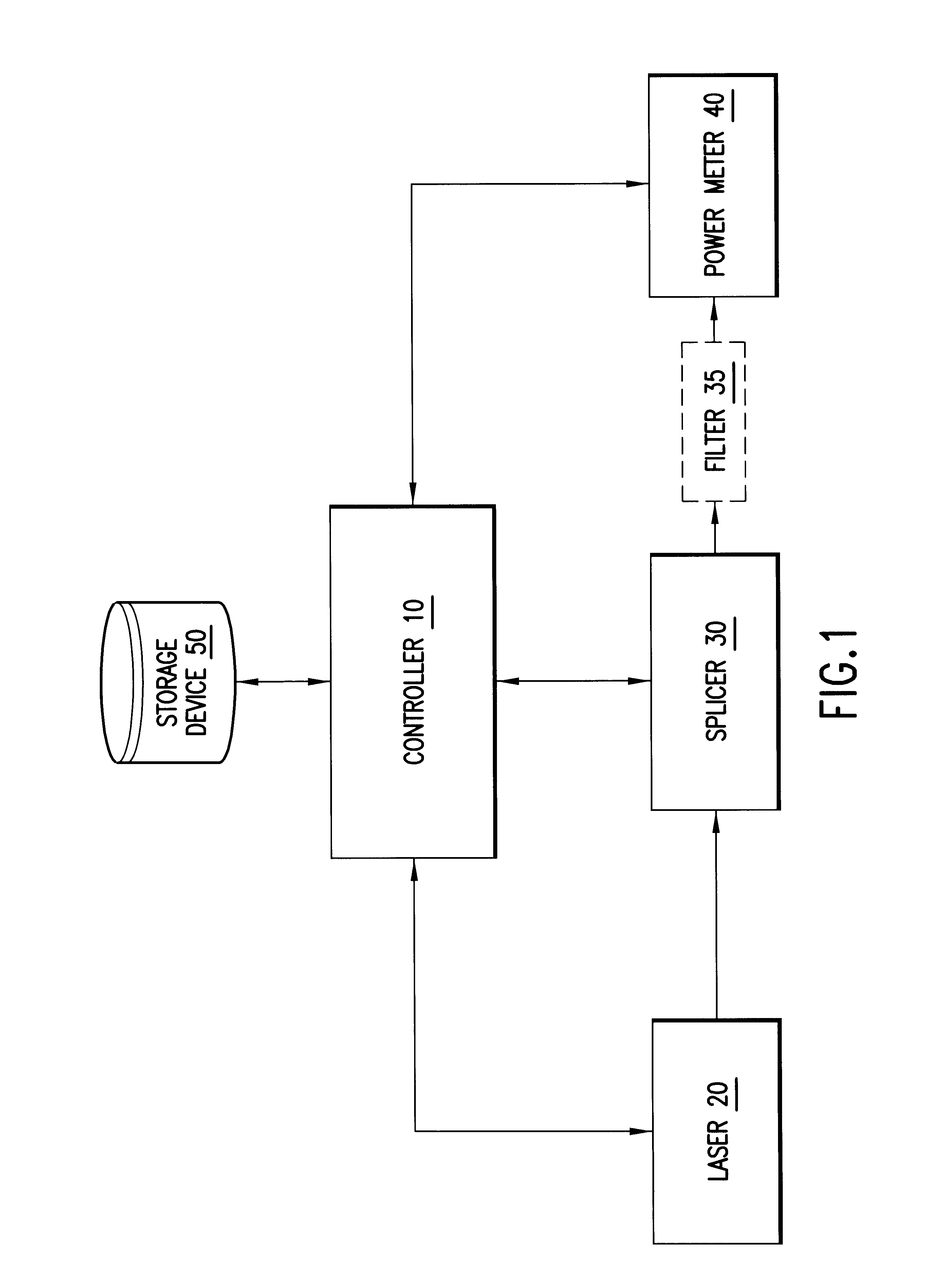Method and system for controlling splice attenuation
a technology of attenuation and splicing, applied in the field of fiber optics, can solve the problems of laborious operation, inability to accurately determine the attenuation value of conventional techniques, and difficulty in controlling the amount of attenuation
- Summary
- Abstract
- Description
- Claims
- Application Information
AI Technical Summary
Benefits of technology
Problems solved by technology
Method used
Image
Examples
first embodiment
The operation of the invention will now be described in reference to FIGS. 2-8. Further embodiments will be described in relation to FIGS. 9-18 below.
The high-level flowchart of FIG. 2 illustrates a combined methodology in which the inventive power control mode and energy control mode are utilized in conjunction and to advantage. This combined method may begin with a first splicing process which is a conventional splicing process that splices two fibers together. There is a chance, albeit quite small, that the conventional splicing operation will produce a splice with the desired insertion loss. This small probability is tested and, if the splice has an attenuation value within the desired values, splicing data is stored by the controller 10 in the memory device 50 and the process ends.
The splicing data stored in FIG. 2 includes a splicing recipe. Conventional splicing operations typically utilize a splicing recipe which may include a large number of parameters. These parameters inc...
second embodiment
The second embodiment includes algorithms that estimate the transient attenuation difference value which is also called the "final jump" value because the measured attenuation value takes a final jump after the splicer 30 is turned off.
FIG. 13 illustrates the final jump. The attenuation splicing graph of FIG. 13 also shows the attenuation value (negative values are graphed) as a function of time during the attenuation splicing process. The diamond shaped indicia indicate attenuation values read by power meter 40.
Preferably an initial reading is taken before splicing starts. The attenuation value typically drops off sharply once splicing starts as shown in FIG. 13. This drop-off or initial jump may be measured by taking the difference between the initial reading and a reading just after the splicer 30 is turned on. The attenuation value then begins to fall (the graph plots negative attenuation values). From these values, the rate of change or slope can also be determined. As further ...
PUM
| Property | Measurement | Unit |
|---|---|---|
| insertion loss | aaaaa | aaaaa |
| power | aaaaa | aaaaa |
| energy | aaaaa | aaaaa |
Abstract
Description
Claims
Application Information
 Login to View More
Login to View More - R&D
- Intellectual Property
- Life Sciences
- Materials
- Tech Scout
- Unparalleled Data Quality
- Higher Quality Content
- 60% Fewer Hallucinations
Browse by: Latest US Patents, China's latest patents, Technical Efficacy Thesaurus, Application Domain, Technology Topic, Popular Technical Reports.
© 2025 PatSnap. All rights reserved.Legal|Privacy policy|Modern Slavery Act Transparency Statement|Sitemap|About US| Contact US: help@patsnap.com



